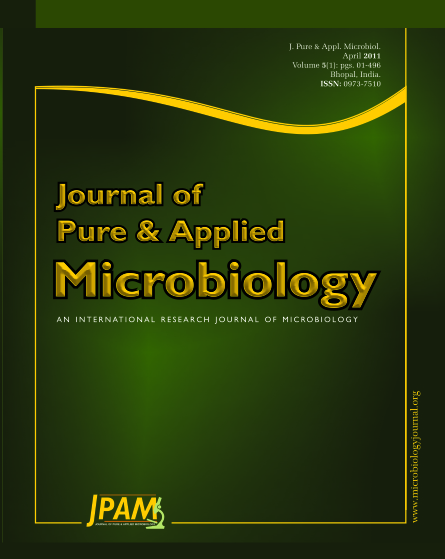Phenol oxidase (benzenediol O2:oxidoreductase [EC 1.10.3.2], namely, Laccase) Pleurotus ostreatus catalyzes the oxidation of various aromatic compounds (mono-, di, and polyphenols, aminophenols, and diamines) by reducing molecular oxygen to water through an oxidoreductive multicopper system. It is one of the well studied enzyme used for bioremediation of xenobiotics. Its broad substrate specificity offers a wide opportunity for screening pollutants inorder to predict potentical targets for degradation. Present study utilizes protein – ligand docking as tool to achieve it. Homology modeling of the enzyme Laccase from Pleurotus ostreatus has been performed based on the best hits from NCBI BLAST against PDB database. The crystal structures of Laccase of Trametes versicolor (PDB ID 1GYC_A) and Rigidoporus lignosus (PDB ID 1KYA_A, 1V10_A) from Protein Data Bank were identified as suitable templates which revealed high level of sequence identities respectively. A comparative assessment of secondary structure using SSM web server revealed greater percentage of residues in beta sheets. A three-dimensional model was generated using MODELLER9v7 based on multiple templates (PDB ID’s 1GYC_A, 1KYA_A, 1V10_A). Protein sequence alignment was performed using CLUSTALW 2.0.8. With the aid of molecular mechanics method using force field AMBER the final model was obtained. Inspection and analysis of the final model was made by PROCHECK, VERIFY3D graph, PROVE Program. After the prediction of 3-dimensional model of Laccase, the possible active site of Laccase was determined using CASTp web server. The three dimensional structures of ligands (substrates and pollutants) including all hydrogen atoms, were built and minimized using the Dundee PRODRG2 Server. Toxicity studies were carried out using the web server OSIRIS Property Explorer in which the Mutagenic, Tumorigenic irritation and reproductive effects of the ligands were analysed. The Docked complexes were validated based on the GOLD Scoring function to pick out the best substrates for Laccase, suggesting that it might be able to oxidize these pollutants.
Laccase, Homology Modeling, Docking, Toxicity risk
© The Author(s) 2011. Open Access. This article is distributed under the terms of the Creative Commons Attribution 4.0 International License which permits unrestricted use, sharing, distribution, and reproduction in any medium, provided you give appropriate credit to the original author(s) and the source, provide a link to the Creative Commons license, and indicate if changes were made.


